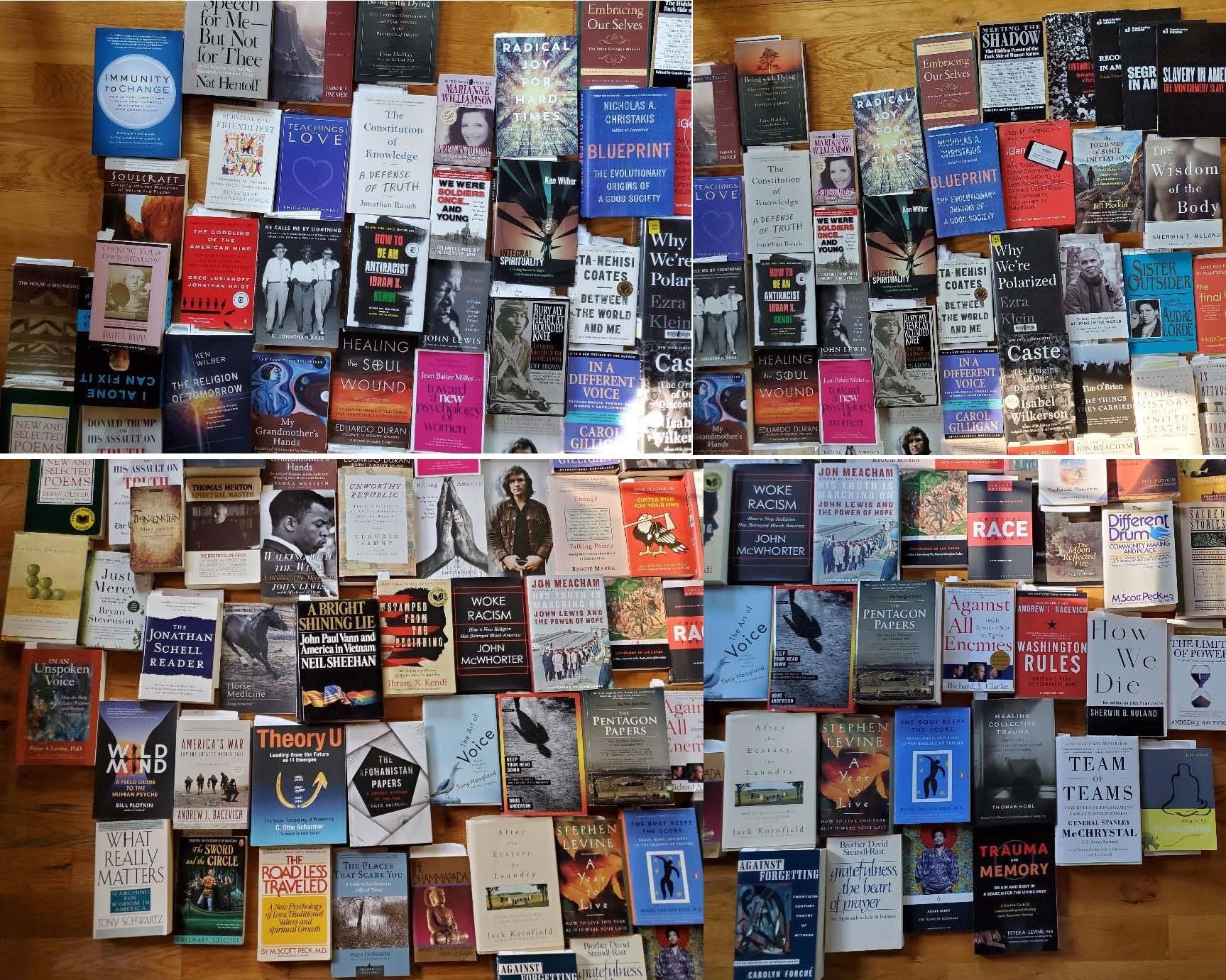Enough With the Talking Points #2: Who (You Think) You Are in Conversation
This essay explores some components that each of us brings to conversation (and everything else we do) – beliefs, values, experiences and biases that make us who we (think we) are. This self-knowing (and paradoxically the ‘not knowing’ that accompanies it) is essential in conversation if we want to be clear on “what is mine,” “what is yours” and “what is ours” when we speak.
In “The Inner Experience” Thomas Merton implores us to “Reflect, sometimes, on the disquieting fact that most of your statements of opinions, tastes, deeds, desires, hopes and fears are statements about someone who is not really present. When you say ‘I think’ it is often not you who think, but ‘they’—it is the anonymous authority of the collectivity speaking through your mask. When you say ‘I want’, you are sometimes simply making an automatic gesture of accepting, and paying for, what has been forced upon you. That is to say, you reach out for what you have been made to want.”
Some forty years after Merton penned those words, Ken Wilber tells us that “You can be listening to someone coming from [a given developmental structure] and it is obvious that this person is not thinking of these ideas himself; almost everything he says is completely predictable…. He has no idea that he is the mouthpiece of this structure, a structure he doesn’t even know is there. It almost seems as if it is not he who is speaking, but the … structure itself that is speaking through him—this vast intersubjective network is speaking through him” [emphasis in original].
Both Merton and Wilber point to the often invisible impact of culture on our individual viewpoints; Wilber’s assessment adds a developmental component that wasn’t available to Merton; and culture is just one of the forces that influences how each of us shows up in the world.
Imagine two adult friends who are the same age, grew up on the same street, went to the same schools through high school and the same place of worship – effectively the same national and local culture through the age of seventeen or eighteen. Now consider the influences of their genetics, health, personalities, parents, siblings, and unique childhood, adolescent and adult experiences, and to what extent they are aware of any of this – and you have the tip of a very significant ‘who I (think I) am’ iceberg.
Some of the ‘explanations’ offered in response to the events of September 11, 2001 in New York City, Washington, D.C.; and Pennsylvania include:
The hijackers were jealous of the freedoms, wealth and abundant way of life enjoyed in the United States. As they saw more and more of the manifestations of these freedoms, wealth and abundance via various media, they attempted to destroy what they could not have themselves.
God was punishing New York City for its sins – especially homosexuality and the greed inherent in the corporate cultures of Wall Street, Madison Avenue and Fifth Avenue.
Islam is a violent religion whose followers are unable or unwilling to adjust to the modern world, have no respect for women and consider non-Muslims to be infidels who must be converted or killed.
Some Saudis were angry over their king’s welcoming tens of thousands of U.S. troops, rather than raising their own forces (as they had helped Afghanistan do against the Soviet Union) ostensibly to help prevent an attack by Iraq after that country had invaded Kuwait.
Israel had masterminded the attack in order to solidify U.S. support against Arab enemies (another version claims the C.I.A conspired with Israel on this), especially since there were increasingly more hints of support in the United States for Palestinians.
Thousands civilians had been killed in U.S. military action in the Middle East since 1980, and a group of men figured out a way to fight back against the superior power of the United States, much as colonists had done against Great Britain in the 1770’s.
There are more; these will suffice.
Two ways you can work with this right now:
Spend some time inquiring into what beliefs, values, and experiences might lead someone to hold any one or more of the above responses. Really inquire; don’t just guess or mock those statements with which you disagree.
Reread each of the above bullet points and pay close attention to how your belly, your heart and your mind react to each. What is it about you such that you react as you do?
Do some research into which, and to what extent any, of the responses are true.
You can conduct a similar experiment with any issue, large or small.
In our next essay, we’ll explore several other components that influence who each of us (thinks he or she) is. Our goal is to begin to recognize the lenses through which we see and experience the world.
Thanks for reading this far.
_____
Merton, Thomas. “The Inner Experience.” Thomas Merton: Spiritual Master. Ed. Lawrence S. Cunningham. Mahwah NJ: Paulist, 1992, p. 295.
Wilber, Ken. Integral Spirituality: A Startling New Role for Religion in the Modern and Postmodern World. Boston: Integral-Shambhala, 2006, p. 277.

